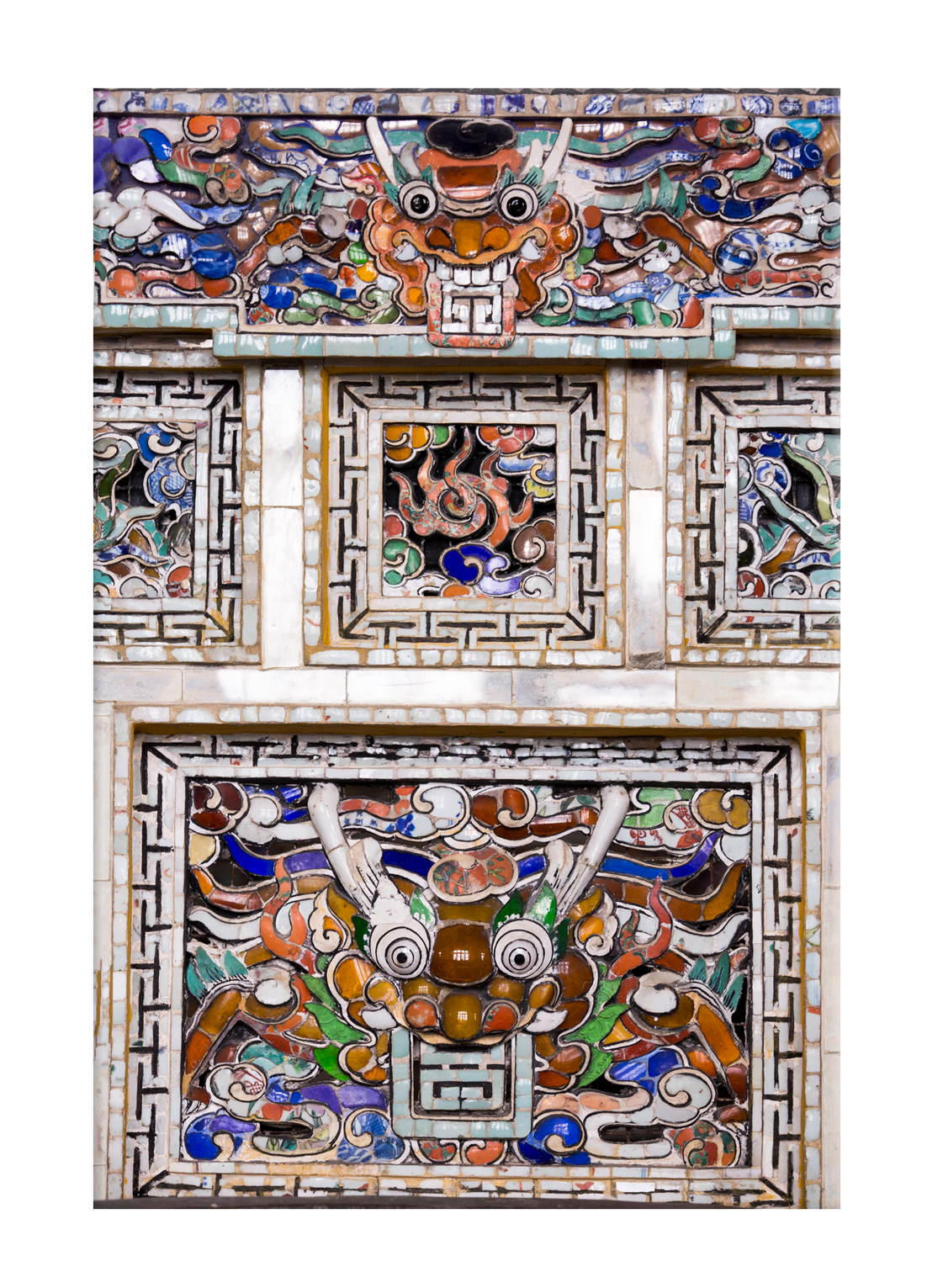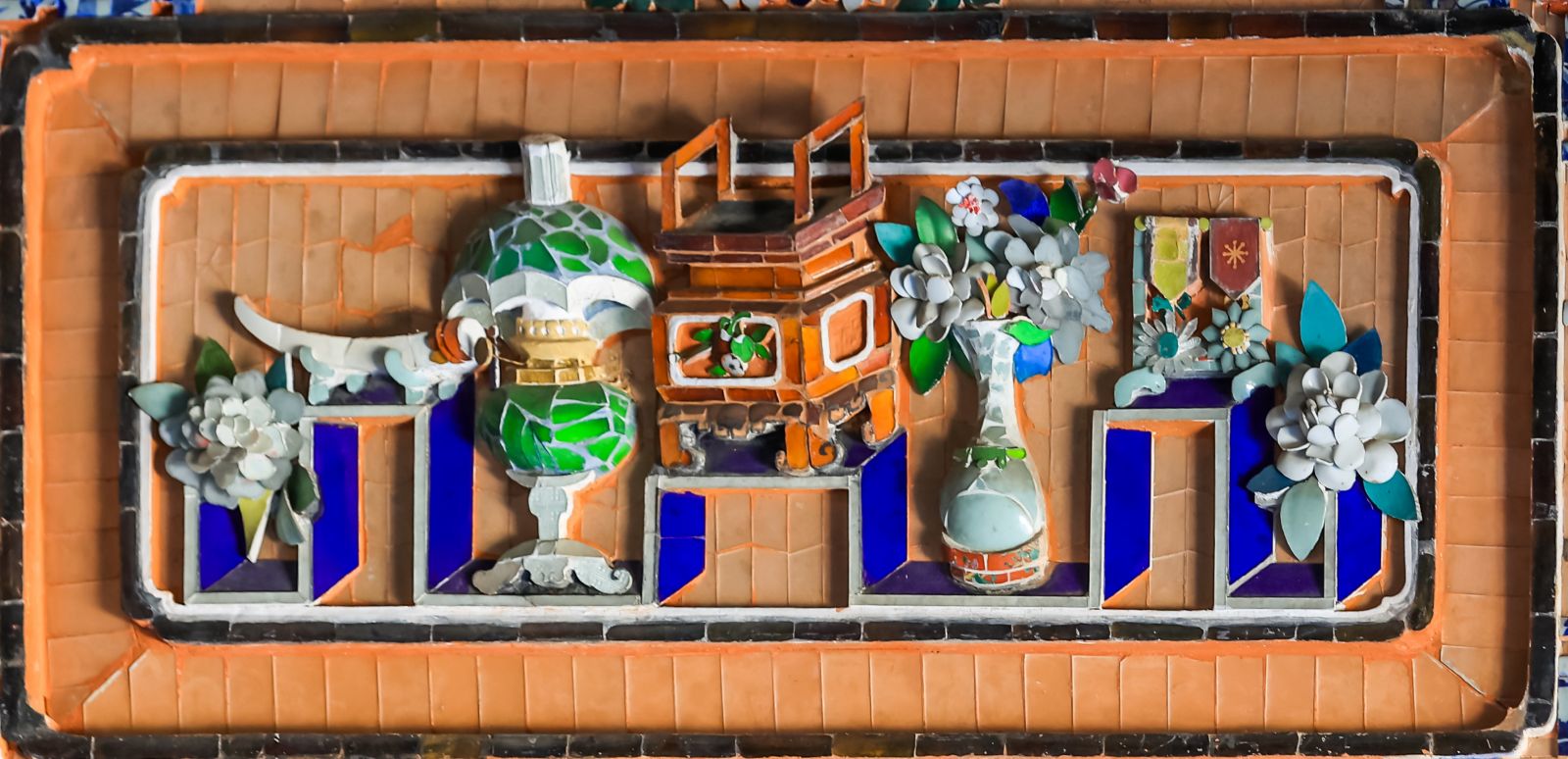The walls inside Ung Mausoleum are covered with reliefs made of porcelain pieces. These decorations recapture the themes of still life, flowers, and mascots in traditional Vietnamese decor, and all conveying auspicious meanings.
Through the talented hands of Hue artisans, pieces of porcelain and colored glass from cups, bowls, vases, bottles, etc., were carefully cut and then meticulously assembled into beautiful paintings and reliefs of birds, flowers, animals, etc. They depicted images from the classics of Confucianism, Taoism, Buddhism, and even folk motifs.
Intriguingly, despite the hard material used such as porcelain and glass, thanks to an ingenious color scheme based on the main tones of white, yellow, brown, blue, green, and purple, the mosaic is harmonious like a vivid color painting. Especially, there is a fusion of Eastern and Western architecture.
Hue News would like to introduce a photo reportage on the mosaic decorative art in the mausoleum of Emperor Khai Dinh by the photographer Trung Phan.
.jpg)
The ceiling painting “Nine Dragons Hidden in Clouds” at Khai Thanh Palace was painted by foot by artisan Phan Van Tanh
.jpg)
Statue of King Khai Dinh and Buu Tan

Dragon relief

Long Ngu Hy Thuy - conveying the meaning of respecting talented people, symbolizing luck and advancement

The animal theme is sophisticatedly expressed

The Tu Quy (Four Seasons) theme: apricot, orchid, chrysanthemum, bamboo (sometimes orchids are replaced by lotus flowers, bamboo is replaced by pine) highlighting the noble virtues of a gentleman, and at the same time praising the beauty of nature through the four seasons of spring, summer, autumn and winter


The image of the setting sun implies the deceased

Corinthian headdress

Oil lamp image

Western clock image

The tennis racket is elaborately inlaid
By Hue News